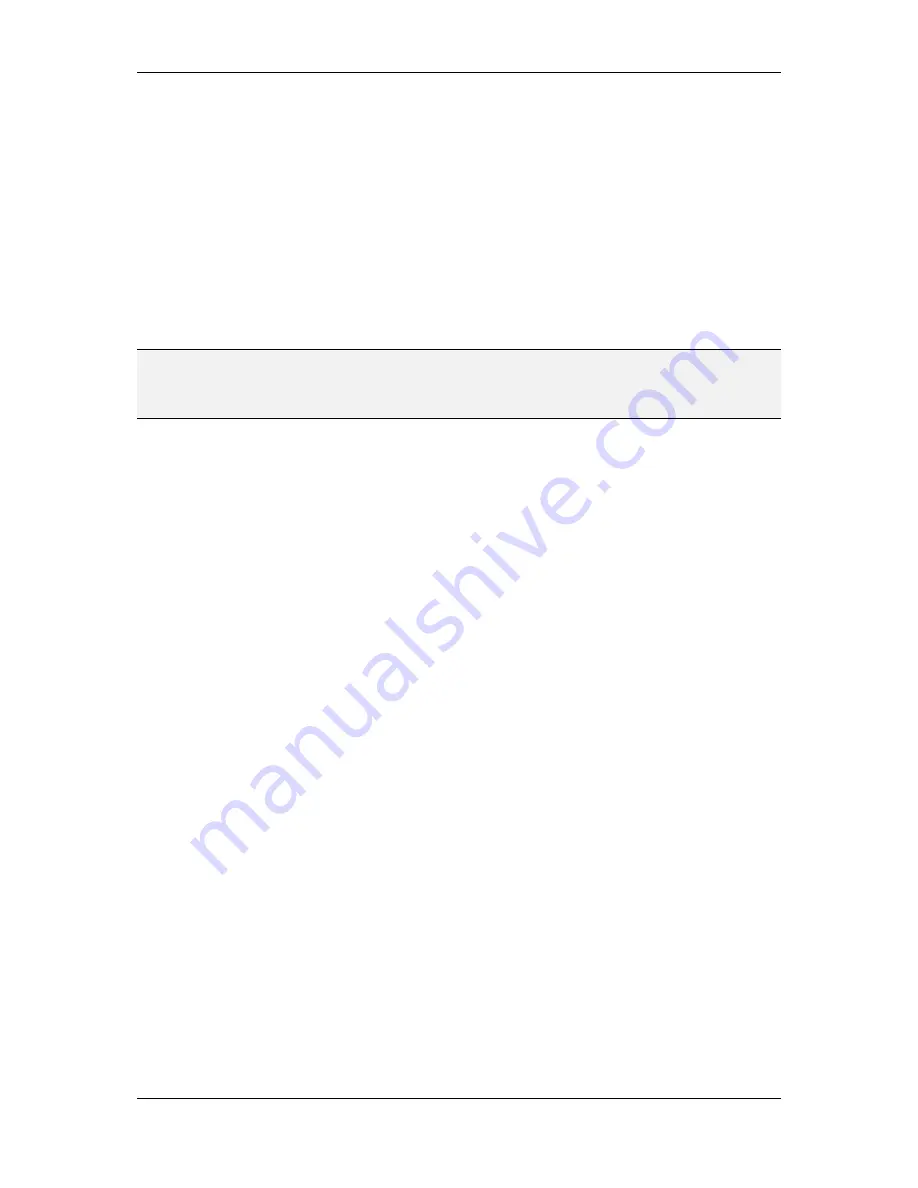
L-VIS User Manual
134
LOYTEC
Version 6.2
LOYTEC electronics GmbH
Needle Cover Size:
Diameter of the small round cap covering the needle base.
Can be set to 0 to disable the needle cover.
Tick Length:
Length of the tick marks in pixel. Can be set to 0 to disable tick
marks (same as disabling the tick mark option in the basic setup).
Line Width:
Width of the scale outline. Can be set to 0 to disable the outline.
Secondary Ticks:
Number of additional tick marks without label, to be drawn
between two major tick marks (with label). Can be set to 0 for no additional tick
marks or to any other value making sense for the value stepping of the labels. For
example a label stepping of 0,5,10,15,… could use 4 additional tick marks, a
stepping of 0,10,20 could use 9, 4, or 1 additional tick, depending on how far the
major ticks are apart (depends on the font size).
NOTE:
Unlike most other controls, width and height of the analog meter control define the outer
boundaries into which the control is fitted. Depending on the settings, the actual size and
position of the scale may vary. For this type of control, it is therefore advisable to set up all
display options first and position the control on the screen afterwards.
9.5.13 Knob Control
The knob control displays a numeric value as a rotating knob. Unlike the analog meter
control, a knob can be turned by the user to change the value. The knob features built-in
knob designs, including the knob and the faceplate, as well as the option of loading an
image to use for the knob and a separate image for the faceplate. The faceplate can be back-
lit, such that dots or other position markers light up as the knob is moved. Using a
transparent color for the labels and tick marks, they can be back-lit as well.
Due to the complexity of this control, it is only available on LVIS-3ME models and LWEB.
9.5.13.1 Layer Structure
Knob controls are internally constructed from multiple layers, which are stacked on top of
each other. Understanding the layer structure can be important to understand how the
various configuration options can be used to create a number of different visual effects.
The layer structure from bottom to top:
Background:
The first layer is the background color. Depending on the
configuration of upper layers, it may never be visible or play an important role.
Knob Background:
The next layer is the knob background. It is drawn over the
general background, exactly where the knob will be. This color may be visible
through transparent areas in the knob, for example LED cut-outs.
Backlight:
This layer consists of a circular light strip of configurable radius,
width, and color. There are different modes in which the light strip can be drawn.
Usually it is drawn in a way to indicate the current knob position, but it can also
be a static light strip. For the light strip to be visible, cut-outs need to be placed in
the faceplate or the knob, such that the backlight may shine through.
Faceplate:
On top of the backlight, the faceplate is drawn. This layer consists
either of a single configurable color, or an image. The faceplate covers the entire
control. In case of an image, the image usually already contains tick marks and
labels as needed. Parts of the image may be transparent for the backlight to shine
through and illuminate indicators or other decorations. Suitable ticks and labels,
as well as cut-outs for the backlight may also be added to the faceplate through
various configuration options. Note that ticks and labels are drawn onto the
faceplate in a way that the faceplate becomes transparent if the color of the ticks






























